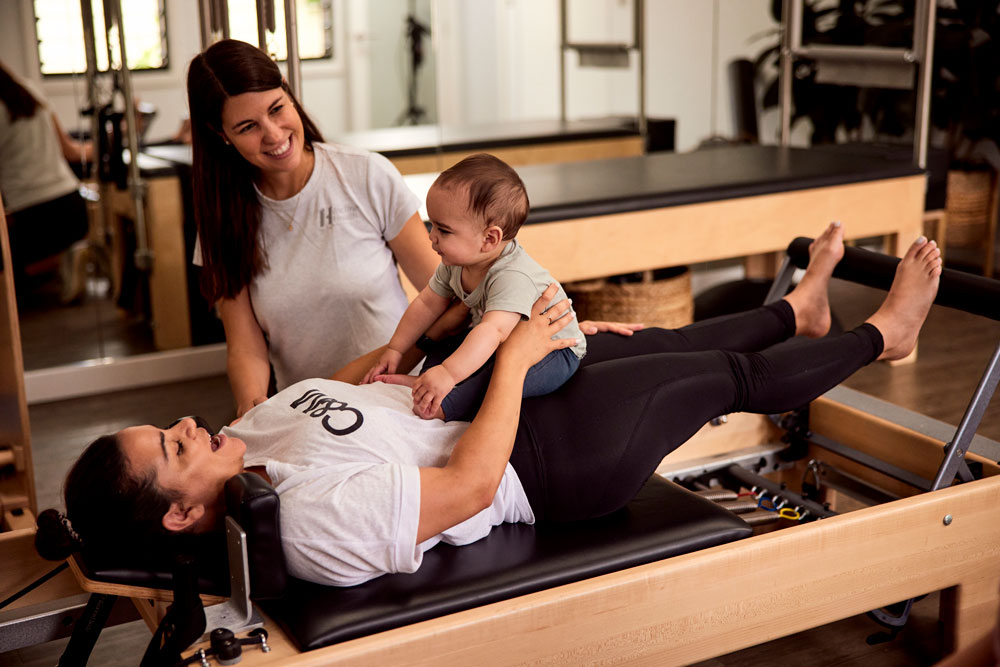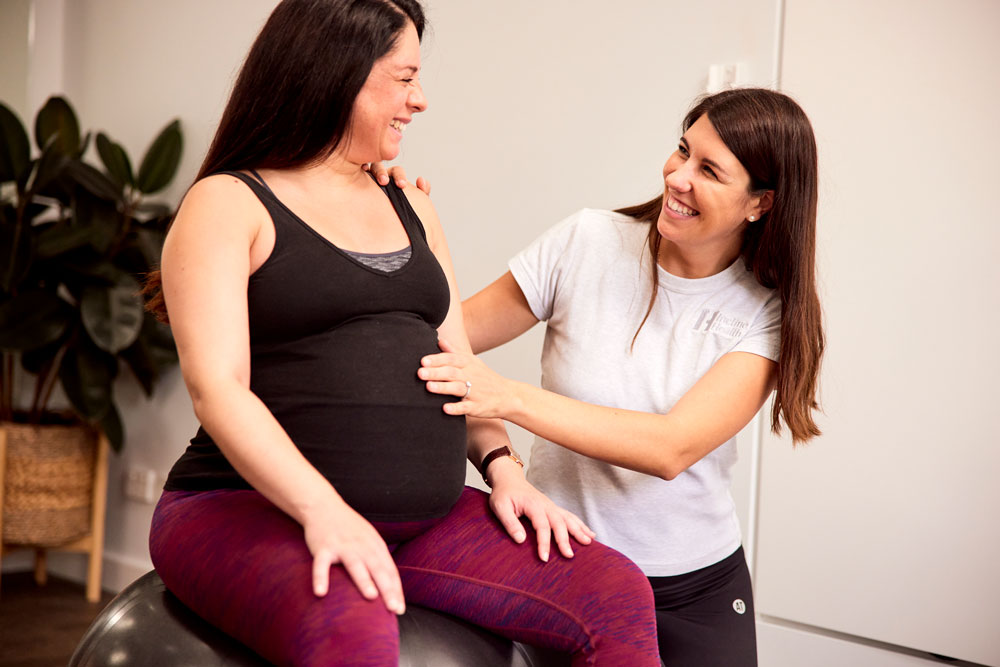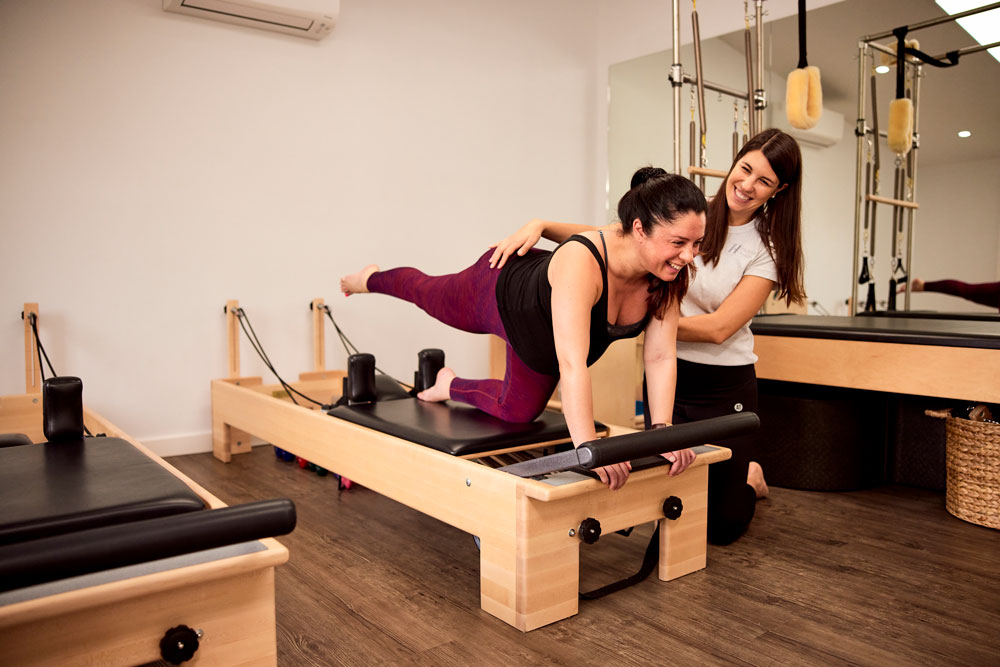Clinical Pilates Explained: What It Is and How It Works
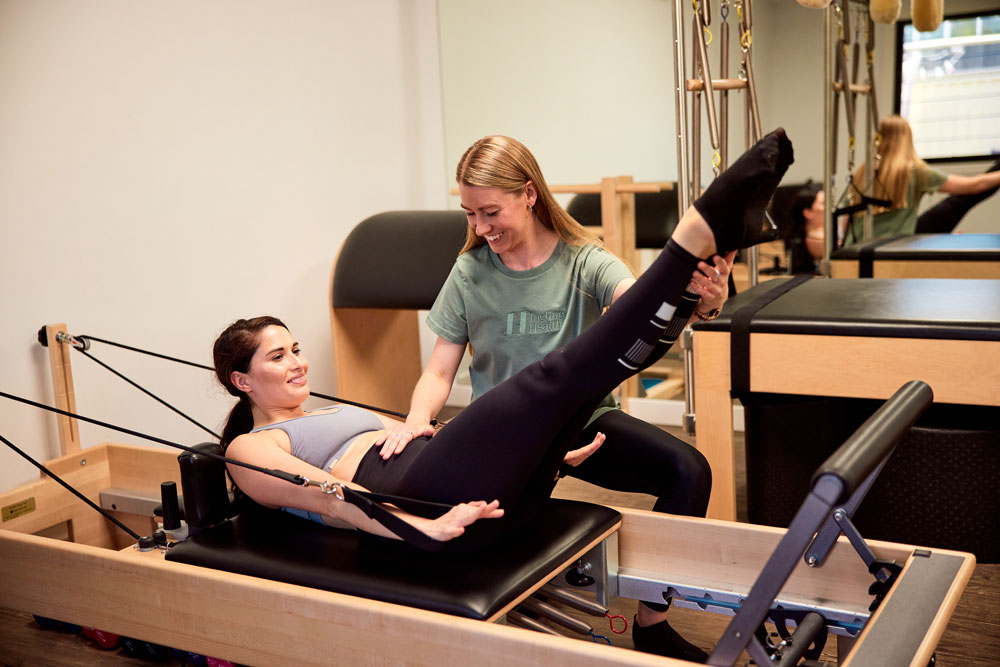

Clinical Pilates is a specialised form of exercise therapy designed to improve strength, stability, flexibility, and body awareness for participants . Unlike traditional Pilates, which is often delivered in a group fitness setting, Clinical Pilates is tailored to an individual’s specific needs and is guided by a trained physiotherapist or healthcare professional.
This form of Pilates is evidence-based, meaning it’s supported by research and clinical practice as a treatment . It’s not just about moving your body—it’s about moving your body with purpose, safety, and individualised care.
In recent years, Clinical Pilates has grown in popularity because it bridges the gap between injury rehabilitation and safe, effective movement. It’s not just a workout—it’s a therapeutic approach to better health and wellbeing. Whether you’re recovering from an injury, strengthening your abdominal muscles managing chronic pain, or looking to improve posture and mobility, Clinical Pilates offers a supportive, evidence-based path forward.
People, including dancers, appreciate Clinical Pilates because it is highly adaptable. It’s not just for the super fit—it’s for real people, of all ages and backgrounds, who want to move better, feel stronger, and stay active.
Clinical Pilates vs. Traditional Pilates
While both Clinical Pilates and traditional Pilates are based on Joseph Pilates’ principles, clinical pilates differs in significant ways. Traditional Pilates often takes place in a general fitness class, focusing on strength, flexibility, and control. In contrast, Clinical Pilates is designed for those with specific physical needs—such as injury recovery or chronic conditions—and is overseen by a physiotherapist to ensure safety and effectiveness.
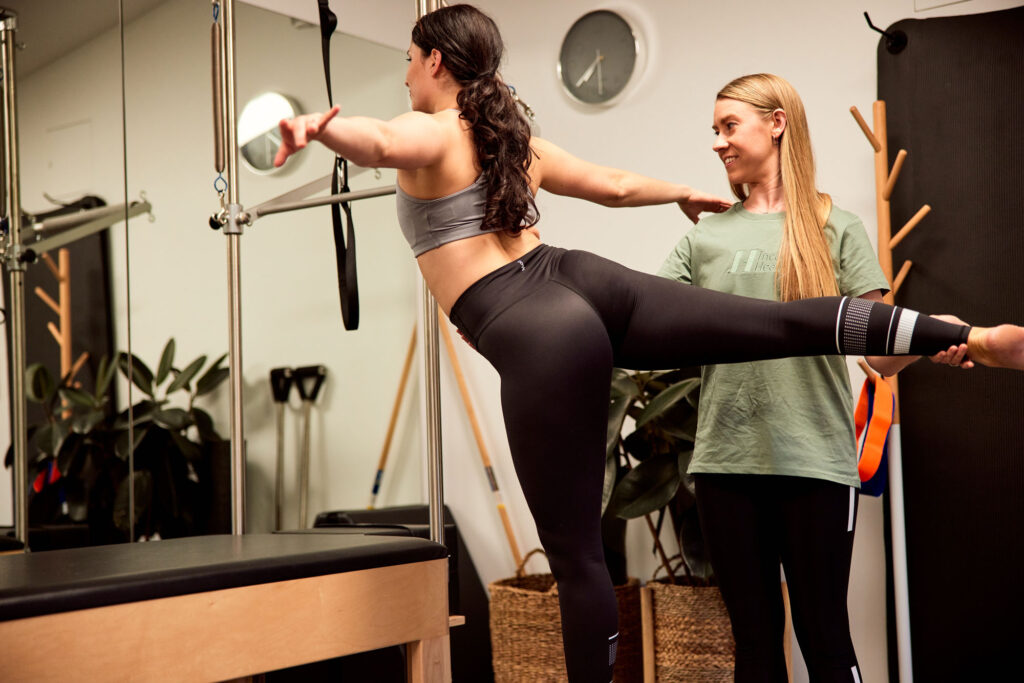

Clinical Pilates is more targeted. It focuses on specific goals like relieving pain, improving function, and supporting long-term health outcomes. It’s less about the flow of a class and more about precision, control, and safety.
The Role of Physiotherapists
Physiotherapists play a central role in Clinical Pilates, using their medical knowledge to assess, prescribe, and modify exercises. They tailor programs to address an individual’s injuries, postural imbalances, or functional goals, ensuring each movement supports recovery and progress.
Their expertise is vital in adapting exercises for conditions like joint replacements, disc injuries, or pelvic floor dysfunction. They provide hands-on guidance and help clients build a stronger, more resilient body.
Evidence-Based Approach
Clinical Pilates is grounded in research and clinical experience. It’s not a one-size-fits-all program—it’s a tailored, therapeutic approach backed by evidence showing health benefits pilates in pain management, mobility, and functional strength. Studies have shown that Clinical Pilates can reduce pain, improve core stability, and support long-term recovery.
How Clinical Pilates Works
Personalised Assessment Process
Your Clinical Pilates journey begins with a comprehensive assessment. A physiotherapist will review your medical history, current condition, and movement patterns to design an individualised program that suits your goals and capabilities. This ensures exercises are safe, effective, and relevant to your needs.
Every program is unique—there’s no cookie-cutter template. Your therapist will regularly reassess your progress and adjust exercises as needed, ensuring your plan evolves with you.
Equipment Used in Clinical Pilates
Sessions often use specialised Pilates equipment such as the reformer, trapeze table, and wunda chair, alongside mat work. These tools offer adjustable resistance, support, and feedback to guide correct movement and build strength progressively. The variety of equipment allows your physiotherapist to modify exercises to suit your current ability.
Focus on Stability, Mobility, Posture, and Alignment
Clinical Pilates emphasises the fundamental principles of controlled movement: stability, mobility, postural alignment, and breathwork. Each exercise is designed to restore functional movement patterns and improve body awareness, making you more confident in your everyday activities.


Benefits of Clinical Pilates
Injury Prevention and Rehabilitation
Clinical Pilates helps prevent injury by improving muscle balance, joint stability, and movement control. It’s also widely used for rehabilitation, aiding recovery from conditions like lower back pain, joint surgeries, or sports injuries. By targeting the root causes of pain and dysfunction, Clinical Pilates supports long-term health.
Pain Relief (Lower Back, Neck, and Beyond)
By addressing underlying muscle imbalances and postural issues, Clinical Pilates can alleviate pain in areas such as the lower back, neck pain, and shoulders. Gentle, targeted exercises promote healing without overloading sensitive areas.
Improved Posture and Flexibility
Poor posture is a common contributor to pain and dysfunction. Clinical Pilates retrains postural muscles, increases flexibility, promotes better alignment, and enhances muscle strength, helping you stand and move with greater ease and efficiency.
Core Strength and Body Awareness
Core strength is a major focus of Clinical Pilates. Strengthening the deep abdominal and trunk muscles creates a stable base for all movements, while enhanced body awareness supports safer, more efficient movement patterns.
Holistic Benefits: Mental Health and Stress Relief
Clinical Pilates isn’t just about the physical. The focus on controlled breathing, mindfulness, and movement can also reduce stress, improve mental clarity, and promote overall wellbeing. It’s a holistic practice that nurtures both body and mind.
Who Can Benefit from Clinical Pilates?
Post-Operative Patients
Clinical Pilates, including pelvic floor strengthening, is ideal for those recovering from surgery, such as joint replacements or spinal operations. It provides a safe, gradual return to movement while respecting the body’s healing process.
People with Chronic Pain
Those living with chronic conditions such as arthritis, fibromyalgia, or persistent back pain can find relief through Clinical Pilates. The individualised approach ensures exercises are safe, manageable, and supportive.
Pregnant and Postnatal Women
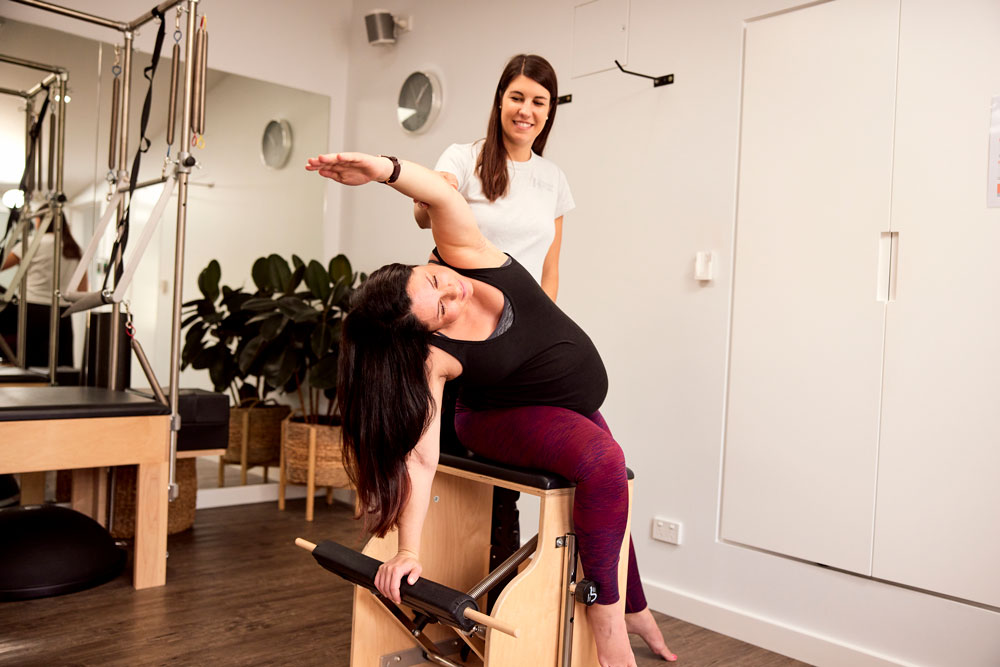

Clinical Pilates is a gentle and effective way to strengthen the pelvic floor muscles, support the spine, and maintain mobility during and after pregnancy. It helps women manage postural changes, prepare for birth, and recover postpartum.
Desk Workers and Those with Poor Posture
For people who sit for long hours or struggle with poor posture, Clinical Pilates offers targeted exercises to counteract slouched shoulders, tight hips, and back pain. It helps build resilience against the physical stresses of modern life and improves overall comfort and movement.
Clinical Pilates vs. Reformer Pilates
Key Differences in Purpose, Customisation, and Supervision
While both Clinical Pilates and Reformer Pilates use similar equipment, their goals differ. Clinical Pilates is a therapeutic, individualised approach designed and supervised by a physiotherapist. Reformer Pilates, often delivered in a group setting, focuses more on general fitness, with less personalised attention.
When Each Is Appropriate
Clinical Pilates is recommended for those recovering from injury, managing chronic conditions, or needing specific guidance. Reformer Pilates may suit those with no injuries who are looking to improve strength, flexibility, and fitness in a group environment.
What to Expect in a Session & Next Steps
Initial Consultation and Goal Setting
Your Clinical Pilates journey begins with a thorough consultation to establish an exercise program . This includes a medical history review, movement assessment, and goal discussion. Your physiotherapist will explain how Clinical Pilates can support your specific needs and develop a tailored plan.
Ongoing One-on-One or Small Group Sessions
Sessions may be one-on-one or in small groups of 2–4, ensuring close supervision. Exercises are adjusted over time to match your progress, always working within safe parameters. Your physiotherapist will monitor technique closely to ensure you’re moving safely.
Reiterating the Key Benefits
Clinical Pilates offers:
- Personalised programs
- Expert supervision
- A safe, progressive approach
- Relief from pain
- Improved strength, flexibility, and posture
Ready to Get Started?
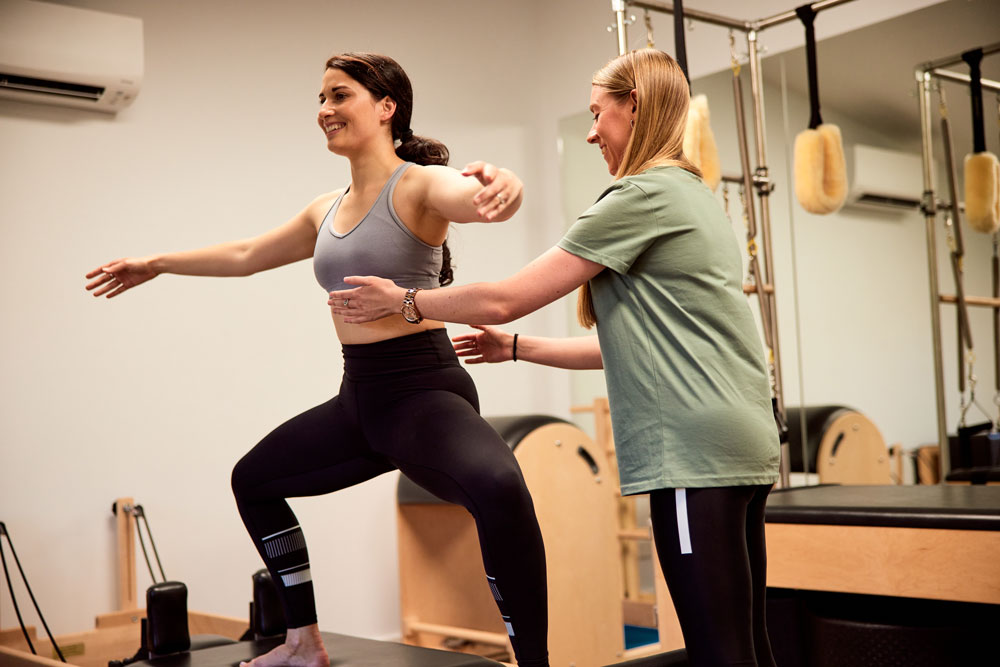

If you’re interested in exploring how Clinical Pilates can support your health goals, we invite you to book a consultation at Incline Health Leichhardt. Our physiotherapists are here to help you move better, feel stronger, and live with less pain.
Common Questions About Clinical Pilates
Is It Suitable for Beginners?
Absolutely! Clinical Pilates is designed to meet you where you’re at, whether you’re new to Pilates or returning after an injury. Every session is tailored to your level and needs.
How Often Should I Attend?
Frequency depends on your goals and condition. Many clients start with 1–2 sessions per week for optimal results, gradually reducing as they build strength and confidence.
Do I Need a Referral?
You don’t need a referral to start Clinical Pilates, but if you’re claiming through private health, your provider may request a letter from your physiotherapist.
Is It Covered by Private Health?
Many private health funds in Australia cover Clinical Pilates as part of physiotherapy services. Check with your fund to see if you’re eligible.
How Does Clinical Pilates Work?
Clinical Pilates works by assessing your individual needs, identifying movement patterns, and incorporating resistance training while tailoring exercises to support recovery and function. It’s a guided process designed for safety and results.
What Is the Difference Between Clinical Pilates and Regular Pilates?
Regular Pilates is often a general fitness class, while Clinical Pilates is tailored for specific needs and led by a qualified physiotherapist. Clinical Pilates provides targeted rehabilitation and support.
How Often Should You Do Clinical Pilates?
This varies by individual, but starting with 1–2 sessions per week is common. Your physiotherapist will advise based on your condition and goals.
What Is Pilates and How Does It Work?
Pilates is a form of low-impact exercise focusing on core strength, flexibility, posture, and controlled breathing. Clinical Pilates applies these principles in a therapeutic setting for rehabilitation and functional improvement.
Final Thoughts: Clinical Pilates as a Path to Better Health
Clinical Pilates is more than just exercise—it’s a bridge between recovery and lifelong wellness. By working with a physiotherapist, you’ll gain a deeper understanding of your body, learn to move with greater ease, and build a stronger, more resilient foundation for life. Whether you’re recovering from an injury, managing pain, or seeking to improve overall fitness, Clinical Pilates offers a safe, tailored path forward.
At Incline Health in Leichhardt, we’re passionate about helping you feel your best. Our experienced physiotherapists are here to guide you every step of the way.
Book your Clinical Pilates consultation today at Incline Health.




